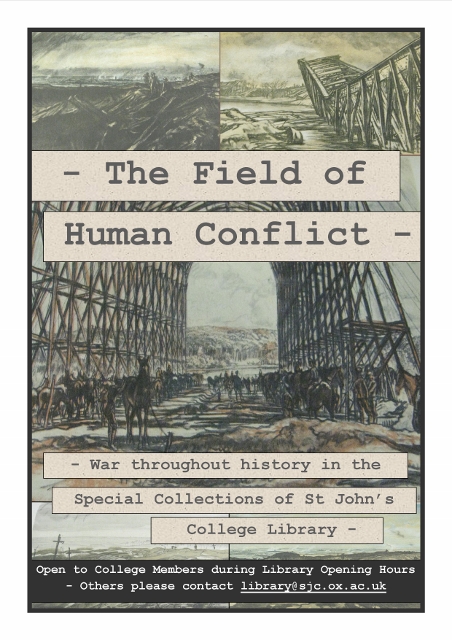February is LGBTQ+ month and I’ve been putting together a display to celebrate LGBTQ+ in business for the Sainsbury Library. As always happens when digging into it, the past has proven more lively, varied, and knit with the present than expected. The pace of change is remarkable even knowing to expect it, and over the three decades covered here it is also mostly positive change. I hope you find it inspires you a little as it does me.
The books are presented as a timeline from left to right.
1991 – The Saturated Self: Dilemmas of Identity in Contemporary Life – Kenneth J. Gergen. Social psychologist Kenneth J. Gergen is an example of academic ally-ship whose work at the start of the 1990s is as sophisticated as current ideas in its approach to LGBTQ+ issues. Although not an overtly queer work, The Saturated Self constructs a theory of modern identity that makes room for and obliges the legitimacy of LGBTQ+ identities. His work on The Social Construction and The Transformation of Identity Politics was also remarkably prescient in 1999 about where the discourse around these questions would go and how it would change in the subsequent two decades.
1994 – Ivan Massow’s Gay Finance Guide. In the UK during the 1990s Ivan Massow was able to use both a new, growing acceptance of homosexuals in public life and their continued stereotyping to his advantage. His London advisory firm completely changed the conversation around gay clients in the insurance industry, who during the AIDs epidemic were being shut out by discriminatory premiums. Off the back of this success he entered politics, shocking many of his left-leaning clientele by calling the Conservative party “the gayest party in Europe”, and was determined to change it from within. While he was briefly close to the Thatcher leadership, by the early 2000s his business was in danger of collapse and Massow agreed to become an agent for Zurich. The legal fall-out after Massow claimed Zurich refused to cover most of his clients almost bankrupted him.
1995 – The Apartheid of Sex: A Manifesto on the Freedom of Gender – Martine Rothblatt. Rothblatt is the founder and chairwoman of the board of United Therapeutics, making her the highest earning CEO in the biopharmaceutical industry. Written the year after Rothblatt’s gender reassignment surgery and as a prelude to beginning her PhD in medical ethics with a specialisation in xenotransplantation, The Apartheid of Sex not only argued for a continuum of gender from both biological and sociological grounds before the idea gained public prominence but also laid the groundwork for Rothblatt’s current radical arguments for high levels of financial and social investment in transhumanism.
1997 – Homo Economics: Capitalism, Community, and Lesbian and Gay Life – Amy Gluckman and Betsy Reed. Gluckman and Reed’s Homo Economics was the first thorough account of the relationship between gay people and the market. Drawing on experts in journalism, activism, academia, the arts, and public policy, it fully contextualised the state of mixed progress contemporary LGBTQ+ groups find themselves in as well as highlighting its fragility, demonstrating how both the continuation of modern capitalism in its current form and the looming threats of reduced social investment frustrate the LGBTQ+ movement in different ways.
2000 – Selling Out: The Gay and Lesbian Movement Goes to the Market – Alexandrea Chasin. Selling Out is an accessible, personal, agitative work that blends the academic and vox pop elements of works like Homo Economics and charted what effect the “embrace” of consumerism and capital was having on the LGBTQ+ community. An associate professor of literary studies at The Eugene Lang College, The New School for Liberal Arts, Chasin charts what had been gained and what had been lost in the mainstreaming of the LGBTQ+ movement, as well as what she feared and hoped might happen in the coming decade.
2002 – The Pink Pages: The Gay and Lesbian Business and Services Directory. As with numerous previous marginalised groups, the LGBTQ+ community created guides to allow safe navigation through a world that was inherently hostile to them. As acceptance grew, a flurry of travel guides appeared in more public forms. Acting as the name suggests (a Yellow Pages for the queer community) The Pink Pages still operates as a list of ally tradespeople. Now replaced by pinkpagesonline and similar sites, this 2002 copy of the directory was the only print edition.
2005 – Business Not Politics: The Making of the Gay Market – Katherine Sender. In this work Katherine Sender, a professor in the Department of Communication and the Feminist, Gender, and Sexuality Studies Program at Cornell University, refutes two major pieces of conventional wisdom in this work. 1 – that the LGBTQ+ community exists independently of how it is marketed to, and 2 – that LGBTQ+ marketing exists independently of political action around that community. Sender shows how marketing as a form of media has helped construct the community as well as increased visibility for its members, while also inherently creating restrictions in its definition.
2006 – The G Quotient – Kirk Snyder. As inclusion and diversity of all kinds was gaining ground not just as a political and moral orientation but also as a strength of modern teams, Kirk Snyder followed up his 2003 Career Guide for the Gay Community with this work arguing that gay men were making the best managers precisely because their gay lives meant they understood inclusion and diversity best. Snyder’s work is focused around what the business community can learn from the LGBTQ+ community to change itself, rather than change them.
2008 – Queer Economics, A Reader – Joyce Jacobsen and Adam Zeller. Jacobsen and Zeller’s collection of academic works includes extracts from Homo Economics, recontextualised a decade later. Queer Economics presents the results of that intellectual provocation, and its movement into areas of demography, labour markets, consumer representation, political economy, and economic history.
2008 – Opportunities and Challenges of Workplace Diversity: Theory, Cases and Exercises – Kathryn A Cañas. Cañas began editing Opportunities and Challenges of Workplace Diversity in 2008 and new editions were produced until 2014. Cañas works as a member of the Management Department in the David Eccles School of Business at the University of Utah, where she has helped shape the department since 1999, incorporating changes in attitudes towards diversity including towards the LGBTQ+ community. Opportunities and Challenges has been a core-text internationally for courses in Diversity, Organizational Behavior, and Human Resource Management Diversity and the Workplace.
2014 – The Glass Closet: Why Coming Out is Good Business – John Browne. Browne was chief executive of BP between 1995 and 2007 and was known as the “sun king” by employees due to BP’s increased interest in renewables under his leadership. Having started his career as an apprentice with BP in 1966, his time as it’s CEO ended acrimoniously when allegations were printed in 2007 by the Mail on Sunday that he had mis-used company funds to support a partner during and after their relationship. Having fought injunctions to stop the allegations being published, Browne resigned. He described later that what “terrified” him was not the financial scandal or potential early retirement, but that his sexuality would become public knowledge. By the time he wrote The Glass Closet Browne was advocating for a wide-spread, top-down corporate policy of LGBTQ+ inclusiveness as proposed by Snyder in 2006.
2015 – Queer Business: Queering Organisation Sexualities – Nick Rumens. Queer Business took the thoroughly business-minded approach of seeing opportunity in problems. He identifies that, despite the developments over the past 25 years, there is a continued lack of association between business studies and LGBTQ+ issues when compared to other areas of scholarship, but argues that there are potential positives to this situation. Rumens describes management and organisational studies as a field in which queer theory may make new advances, and as an area where it “has yet to become exhausted and clichéd”.
2016 – Inclusive Leadership: The Definitive Guide to Developing and Executing an Impactful Diversity and Inclusion Strategy – Charlotte Sweeney and Fleur Bothwick. Charlotte Sweeney Associates launched in 2012 as inclusion, diversity, and equality consultant specialists, following a 20-year career in the finance sector for Sweeney. Fleur Bothwick is Director of Diversity and Inclusion at multinational firm Ernst & Young. She received an OBE in 2013 for services to Diversity and Inclusion in the workplace. Sweeney received the same in 2017 for services to Women and Equalities. A follow-up to Inclusive Leadership, which won the Chartered Management Institute’s Book of the Year 2016, is expected in 2020.
2019 – Tim Cook: The Genius Who Took Apple to the Next Level – Leander Kahney. Tim Cook is routinely cited as the most powerful LGBTQ+ leader in business. In 2014 he was the first Fortune 500 chief executive to come out as gay – a remarkable contrast to Browne’s experience just 7 years prior. While before coming out Cook was not overt in his support of the LGBTQ+ struggle, he has since admitted that in valuing his privacy he “was valuing it too far above what I could do for other people, so I wanted to tell everyone my truth” and ensure LGBTQ+ youth knew that he had relied on the work of people who had fought for their rights before him.
2019 – The Queering of Corporate America: How Big Business Went from LGBT Adversary to Ally – Carlos A. Ball. Covering street protests and boycotts during the 1970s, AIDS activism directed at pharmaceutical companies in the 1980s, and the push for corporate non-discrimination policies and domestic partnership benefits in the 1990s, Ball describes how LGBTQ+ activism has changed the business community’s understanding and treatment of the queer community. This is the current way the history of these two groups is being described and it’s vital to consider it in context of the works that have preceded it.
For more information about the month’s celebrations visit https://lgbtplushistorymonth.co.uk/








Recent Comments